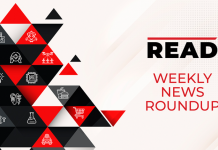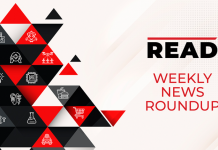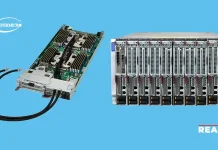Artificial intelligence, self-driving vehicles, and robotics used to seem unrealistic and too futuristic. But today, those technological advancements are transforming the logistics industry. With on-demand logistics booming, technology in supply chains is key to higher efficiency.
Wondering how it’s making a difference? Let’s break it down
Understanding Technology in Supply Chain
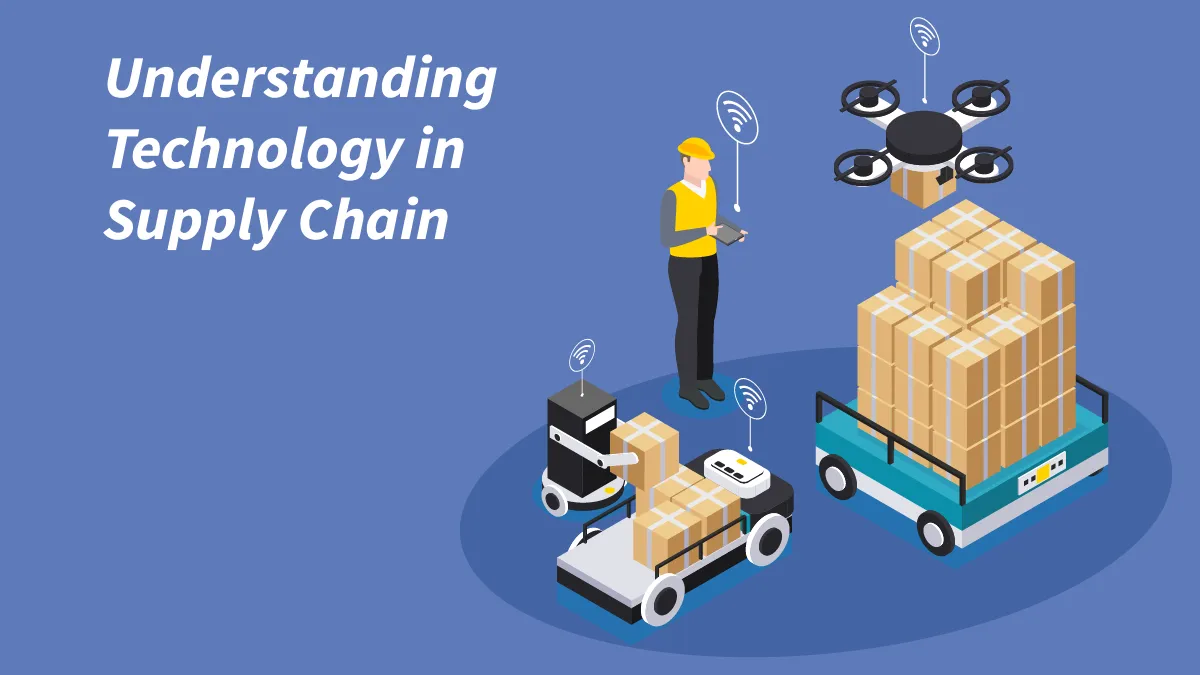 Supply chain technology is a set of tools and features that help companies better control the movement of materials and goods and increase supply chain efficiency.
Supply chain technology is a set of tools and features that help companies better control the movement of materials and goods and increase supply chain efficiency.
Why Does Technology in Supply Chain Matter?
Managing your supply chain involves many moving parts. These include the products and the people involved. So, supply chain tools can assist in organizing and automating processes. Generative AI “has the potential to revolutionize supply chain management, logistics, and procurement,” according to a recent KPMG research on supply chain trends for 2024.
Here are some essential ideas that explain how supply technology works:
Digital Transformation in Supply Chain
Digital transformation of the supply chain occurs when your data and operations are unified on a single platform. You can use AI, machine learning, and the IoT to gather, sort, and analyze data. This can help you predict and prevent future problems.
Role of Data in Supply Chain
Data is what supply chain technology depends on. Data gives organizations visibility and helps them make wise decisions. Businesses can forecast future events using historical data and predictive analytics. They can predict demand, supply chain disruptions, and customer behavior. Thanks to all this information, businesses can now predict tomorrow’s events and make decisions.
Also Read: Optimizing Your Supply Chain: Essential Logistics Management Techniques
Technologies in Supply Chain
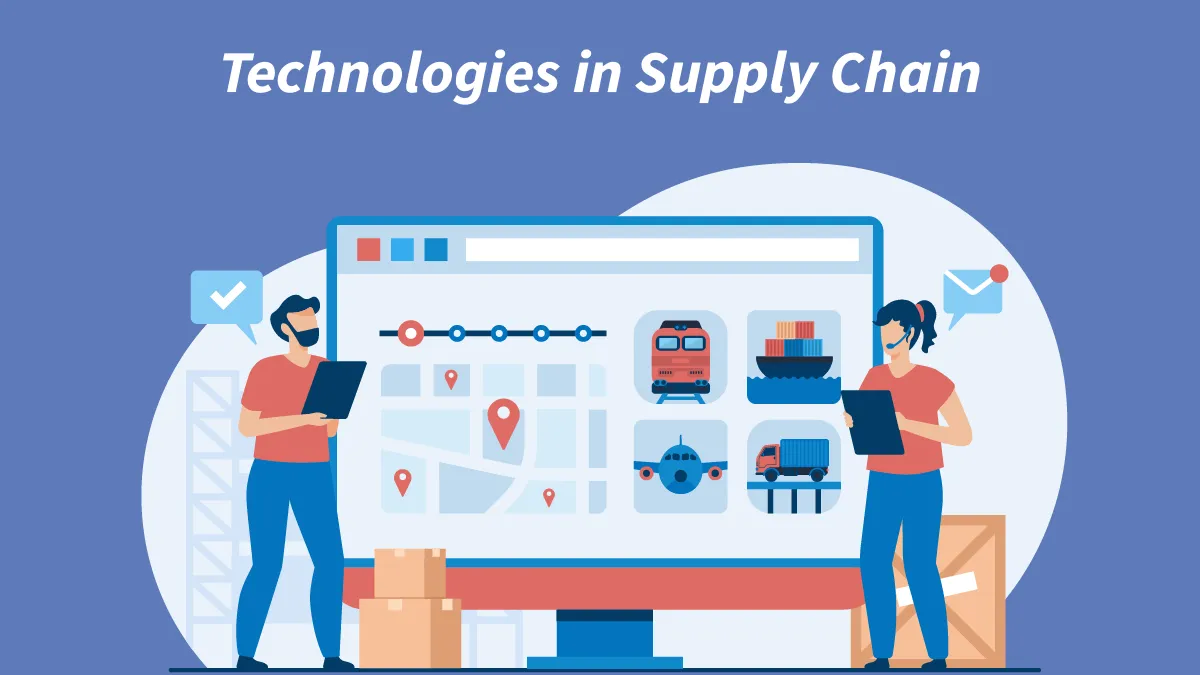 Logistics is undergoing a transformation thanks to technology in supply chain, some of which are described below:
Logistics is undergoing a transformation thanks to technology in supply chain, some of which are described below:
1. AI and Machine Learning
Machine learning (ML) and artificial intelligence (AI) have revolutionized supply chain management.
McKinsey reveals that effective AI in inventory management can cut stockouts by 50%. It can also lower inventory costs by up to 20%. AI/ML technologies improve demand forecasting. They use advanced algorithms and data analytics. This lets businesses predict consumer preferences and market trends with unmatched accuracy. This predictive ability maximizes working capital. It does this by managing inventory, minimizing stockouts, and reducing surplus stock.
Conventional inventory forecasting mostly uses data from the past. However, online firms can now use advanced demand forecasting for supply chain management. It allows them to better predict demand, optimize inventory, and restock as needed.
Machine learning boosts demand forecasting by combining data from many sources. These include demographics, weather, online reviews, and social media (e.g., brand mentions).
Also, AI/ML algorithms optimize logistics. They streamline transport networks and cut costs.
An Oxford Economics Survey found that, after a record year in sales and manufacturing, 70% of companies have tested or adopted AI.
2. Data & analytics
Advanced analytics helps businesses improve supply chains by finding inefficiencies.
Deloitte’s 2019 Supply Chain Survey found that analytics can boost supply chains. They can increase inventory visibility, reduce costs, and improve customer experiences.
3. Robotics Process Automation
RPA can automate manual, repetitive tasks. So, employees can focus on more strategic work. The supply chain is being revolutionized by robotics, which is also providing enormous value.
It increases operational speed and accuracy, especially in manufacturing and warehousing. Also, robots boost productivity, lower human errors, and speed up picking, sorting, and storing. They improve access to hazardous areas. Also, due to current labor issues, robots are the future’s last-mile workers.
4. Internet of Things (IoT)
IoT consists of billions of sensors in many products. These include vehicles and refrigerators, as well as those in the supply chain and the wider world.
IoT can use actionable data from all stages of the supply chain. It also enables data transmission over the Internet between and within systems. It’s now used to find materials, maintain equipment, and track productivity.
In 2013, twenty million smart sensors were deployed in supply chains. They provided real-time data to supply lever controllers. That figure reached $1.1 trillion in 2023, according to Deloitte. IoT technology enables real-time product tracking and monitoring. It helps businesses make informed supply chain decisions.
5. Cloud Computing
Cloud computing lets supply chain organizations process and store large data. It makes information available anytime, anywhere.
‘Cloud computing’ and SaaS (software-as-a-service) are frequently used interchangeably but both of them have different meanings. Cloud computing, or “the cloud,” is a general term. It refers to various pay-as-you-go models for delivering computing services over the Internet.
SaaS is the most known cloud model. The others are IaaS and PaaS. The way cloud computing transforms computing economics is where its real power resides.
This is more crucial than ever for global supply chains since cloud computing allows data to be accessed from any location and offers cloud backups, which can assist prevent data loss or theft.
6. Blockchain
Blockchain technology is profoundly changing supply chains. It affects how retailers and producers of consumer packaged goods operate. Brand perceptions are shifting. Consumers now want safe transactions. They also demand transparency on sustainability and ESG. Blockchain technology in supply chain is meeting these demands. It ensures product origins and secures supply chain transactions.
Blockchain can greatly enhance the supply chain, which frequently lacks transparency and traceability. Every transaction along the supply chain is recorded in its secure, decentralized database. Imagine product traceability and tracking in real time, with regular updates on each specified stage of a journey.
The system reduces mistakes and fraud. It does this by enabling safe, transparent tracking of goods and products.
Simple Tips for Using Technology in Supply Chain
Use these pointers to successfully integrate technology and revolutionize your supply chain:
- Make sure you have a plan for the future of your supply chain company.
- Check the features and costs of the options on the market. This will help you find the best one for you.
- Be aware of the risks of using new technology in supply chain. Take steps to reduce them.
- Get your systems and data ready to support and interface with the new technology.
- To fully utilize the new technology and get staff ready for the changes, hire or train skilled workers. Remind them that they remain an important part of your team.
- Track your progress and make any necessary program adjustments.
- Your technology in supply chain project likely won’t be a one-and-done. The supply chain management industry is always evolving. To stay ahead of the competition, stay up to date on the newest features and developing technologies.
Final Thoughts
Technology in supply chain seeks to improve upon what is already good. Advanced manufacturing trends are helping customers and manufacturers. Customers are getting higher-quality products, faster. Manufacturers can identify what is working and where they can improve. This helps them meet their customers’ ever-changing needs and desires.
The future of manufacturing has been planned for years and is still developing. But, the industry is already seeing the benefits of this strategy. The potential of manufacturing in the future is vast, and we are only just beginning to explore it. As people and the world change and evolve, producers must also be prepared to progress. Merely satisfying customer demand is no longer sufficient. Industry leaders must now anticipate, assess, and adapt to client demand before customers know what they want. They must also adjust as events change preferences.
